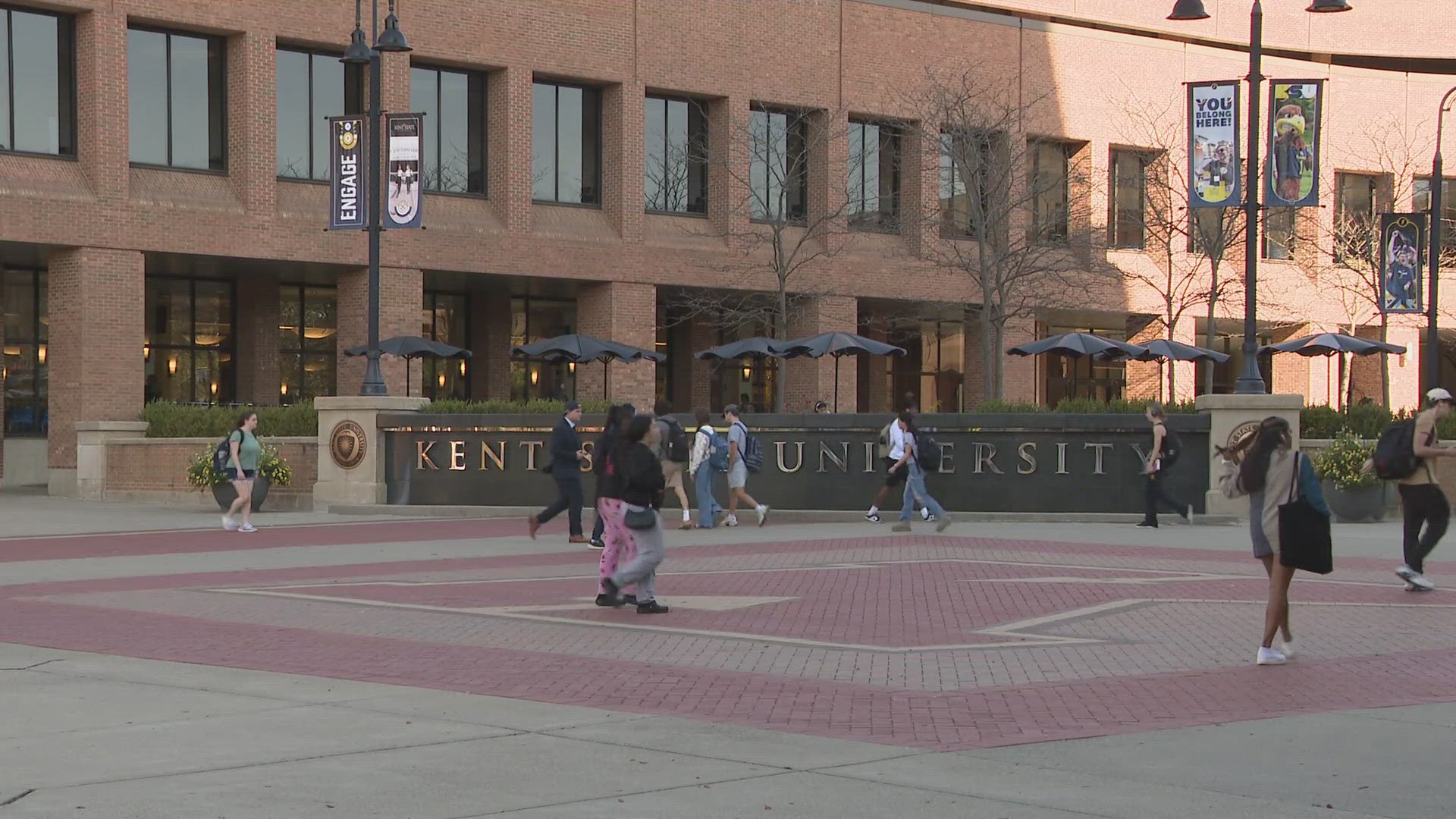KENT, Ohio — Declining enrollment is impacting colleges and universities across the country and right here in Northeast Ohio. Leaders at Kent State University say they are not immune to the financial issues plaguing other schools, but they are taking a unique approach to solving these challenges.
"The way that we are dealing with the issues is different than a lot of our peers, and that's part of the fabric of Kent State as an institution," Kevin West, associate provost for faculty affairs at KSU, says.
THE DIFFICULT TASK OF BALANCING THE BUDGET
In a February online presentation, Kent State President Todd Diacon said the school will need to reduce its spending for the next four years at amounts between $10 million and $25 million each year.
"To deliver a balanced budget we have had to cut university spending in five of the six past years, and we will need to do so in each of the next four years," Diacon shared.
He also informed his virtual audience the university would "need to make noticeable reductions in the number of employees at Kent State."
"It isn't that we'll have to do more with less; it's rather that we're just going to have to figure out how to do things differently," he added.
In the university's annual financial update posted online, Diacon revealed that Kent State closed Fiscal Year 2024 with a $9.9 million deficit, which the university dipped into savings to cover. He said it was the first time in at least 20 years the university ended a fiscal year in a deficit.
Reasons for the budget deficit were outlined in the update as follows:
- Maintenance and repairs expenses were over budget by $7.1 million.
- Healthcare benefits expenses (medical claims, pharmacy) were over budget by $6.6 million.
- The state-mandated tuition discount for the College Credit Plus program totaling $4.0 million has not been historically budgeted (which was corrected for the Fiscal Year 2025 budget).
TRANSFORMATION 2028
The university's Division of Academic Affairs has since developed "Transformation 2028," an initiative to help reduce administrative costs and restructure academic colleges, departments, schools, and programs for the future.
"It's clear that the design is to really address that administrative structure," West explained in an interview with 3News, "so fewer deans, fewer department chairs, and really allowing that to then restructure the institution."
With faculty input, the division developed five potential models that reduce the number of colleges at the university from 11 to a number between seven and nine. West says each model would save the university about $1 million in administrative costs and would not negatively impact students.
"It's not going to affect students at all directly or interested or prospective students," West asserted. "I think what you'll see though is (in years) 28, 29, and 30, as we start reinvesting in new programs and those new structures begin to exist, that's when I think you'll see potentially grants go up at Kent State and greater opportunity for undergraduate and graduate research."
Faculty and staff in the Division of Academic Affairs are currently providing feedback on each plan. According to West, there is not a timeline available as to when the reduction in university employees will occur and when the implementation of the finalized academic structure will begin. He says there are still multiple steps the division will undergo to determine the final structure.
SHARED GOVERNANCE IS KEY
Kent State's Faculty Senate and the university's union partners are contributing to the Transformation 2028 process.
"Kent State may come out looking a little different in the academic structure, but we'll be as strong as ever in regard to continuing as Kent State University in Ohio," said Tracy Laux, chair of the Faculty Senate and a senior lecturer in mathematics at the school for more than 30 years. His role in the process is helping Kent's faculty have a voice in solving the math of balancing the university's budget.
"What we know we are doing is making sure it's a collaborative effort, getting the voice of faculty to administration so their decisions are based upon the expert advice from the faculty," Laux noted.
Faculty input is what West says differentiates their process from other institutions of higher education.
"Shared governance is foundational to Kent State University," he said. "The fact that we have as much faculty involvement in this process … our intent is different, our purpose is different, and we're really focusing on ensuring that Kent State is going to continue to be financially strong and continue to be a place where students in Northeast Ohio and around the globe want to attend."
WHAT THE TRANSFORMATION IS NOT
In a recent email to the university community, the Division of Academic Affairs' Senior Vice President and Provost Melody Tankersley clarified that T28 is not:
- A merger of programs or departments. Students and faculty will continue to teach, learn, research, and design in their disciplines as they currently do.
- A process for sunsetting academic programs. T28 is not the process for shutting down academic degrees and no discussion of doing so is a part of T28's charge.
- A threat to students completing their degrees at Kent State or a reason to consider transferring. All students will continue to work in their same programs throughout their KSU experience.

